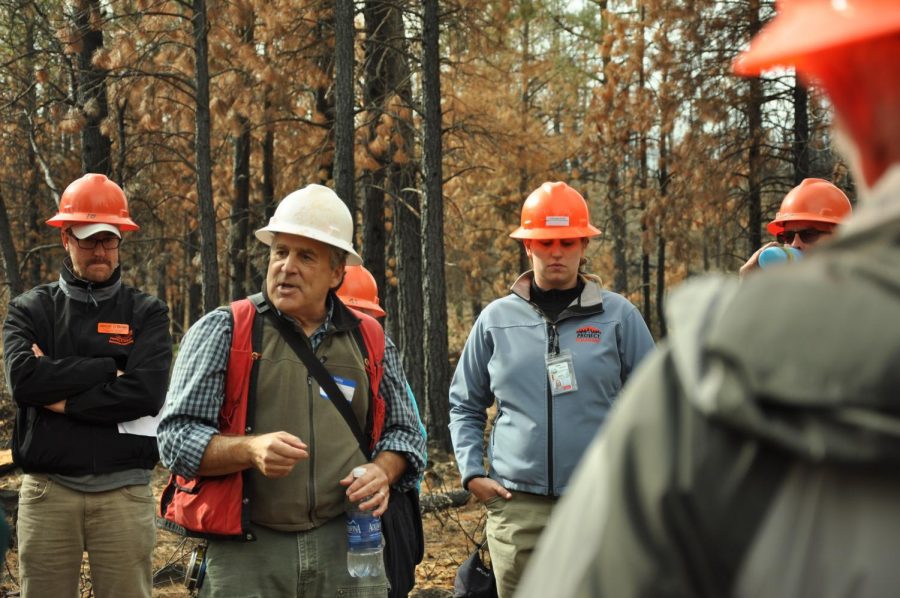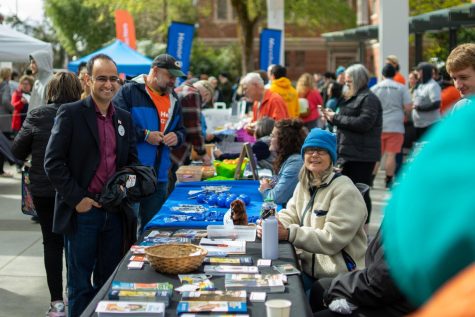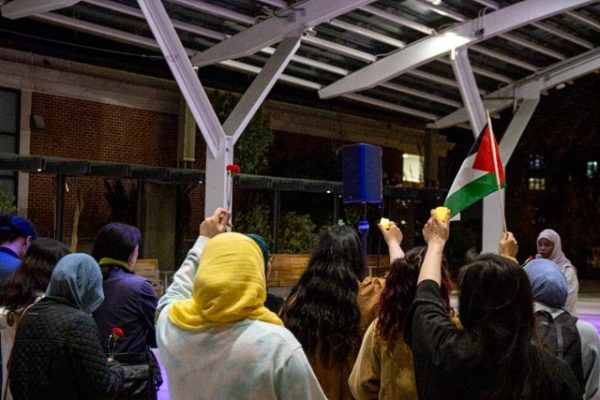OSU set to launch new fire extension program
April 12, 2020
A new Oregon State University Fire Extension Program is set to launch this summer, with goals of mitigating wildfires and educating communities across the state of Oregon.
OSU’s Extension Service was originally established in 1911. The new fire program will fall under the umbrella of OSU’s existing Forestry and Natural Resource Extension Program.
“We have offices in every county,” said Jim Johnson, senior associate dean of the OSU College of Forestry, head of the Department of Forest Engineering and Resources Management and program leader for the FNR Extension Program. “So, we are uniquely positioned to bring people together and to help tackle this problem of reducing our exposure to catastrophic wildfire.”
The program is currently in the process of hiring eight full-time positions, which include a statewide fire specialist, a fire program manager and six regional specialists. The regional specialists will be placed in various sections of the state, and will strive to improve wildfire preparedness and assist with education and outreach in local communities. The regional specialists will integrate into existing extension offices, and will collaborate with forest agents in their locations across the state.
Carrie Berger, the associate program leader for OSU’s FNR Extension and the coordinator for the Northwest Fire Science Consortium, said although regional specialists will be housed in different sections of the state, she expects a vast amount of collaboration between all extension program members.
“I anticipate weekly meetings, checking in with everybody and learning from each other,” Berger said. “Asking their partners all over, ‘what are you working on, what are you doing, what’s working?’—just being a very collaborative team. We’re all going to bring different strengths to the table.”
Objectives for the new program include increased landscape resilience to wildfire, education and outreach to local communities, improving human health and firefighter safety, reducing fuel loads and minimizing the long-term impacts of smoke on human health.
“Fire is a natural part of the landscape in some areas, so we want to educate people, and we want to help them with defensible space,” Berger said. “That’s definitely an outcome—we want to increase fire awareness, we want people to mitigate their risk and we want people to understand and not fear fire.”
Berger and Daniel Leavell, an assistant professor of practice in OSU’s College of Forestry and extension agent for the FNR Extension Program, have been developing the new extension program for several years. Leavell has backgrounds in fire, landscape ecology, disturbance ecology, silviculture and forestry, and played a part in implementing a successful Community Forest and Fire Project in Klamath and Lake County.
“[In Lake County and Klamath County], we did these super landscape cross boundaries, all the stuff we were supposed to do—risk reduction, forest health, rangeland health, community benefit, ecosystem benefit, economic benefit,” Leavell said. “We pulled this partnership together—state, federal, county, local—and as an extension, we were the neutral, facilitative, collaborative force that brought it all together.”
Leavell said he began writing grants for the new fire program in 2015 and 2016, and was rejected four or five times. Consequently, he and Berger began meeting with state legislators to emphasize the urgency and need for a fire program, and described the success that had already been achieved in Klamath and Lake County. As a result, the new extension program was incorporated into a funding bill for the university.
Berger said the last handful of months have been focused on developing the infrastructure for the program, including writing position descriptions and developing educational materials. OSU’s FNR Extension has previously developed a five-volume set of curriculum to teach fire science to constituents across the state, and is working closely with the Oregon Environmental Literacy Program to integrate fire science into K-12 education.
Berger added that the new fire program’s proactive measures to protect against wildfire—which include preparing homes and buildings for fire, planning evacuation routes and educating communities—are imperative, particularly considering climate change, warmer, drier summers and longer fire seasons across the state.
“Our forests are not doing well. There’s drought. They’re sick, there’s disease and insects, they’re overcrowded. And then there’s also people—more wildfires are caused by people now than lightning fires,” Berger said. “We’ve already had some serious issues with wildfires, and we want to mitigate that. We don’t want a Paradise, Calif. here in Oregon. We want Oregonians to be safe, and we want our forests to be resilient.”
Leavell named a number of key partnerships for the new extension program, including the Oregon Department of Forestry, the Oregon Department of Fish and Wildlife and county and city fire districts, to name a few. Berger also noted that tribal partnerships with Native American communities are key, since the fire program hopes to incorporate prescribed burning as a preventative measure in certain areas of the state.
“The power is in the partnerships,” Leavell said. “I could have all the vision and ideas in the world, but it would amount to nothing if these partners didn’t get together, break down barriers and do it.
Leavell said mitigating risk and making a difference on the ground will be key in measuring the success of the new extension program.
“I was on the fire line for over 30 years, every season… I sweated blood and tears on the ground, and I’ve probably been on a thousand fires,” Leavell said. “After every single fire emergency, you ask two things: one is why didn’t they do this? It wouldn’t have happened this way. The other is if I had one dollar to put up front proactively—preventatively—for every million dollars I’ve spent during and after [a fire], we’d be so much better off. Well, here’s the opportunity to do that.”
Berger said finally implementing the program is surreal, since it has taken years to develop.
“I think the great thing about the fire program is that it was built from the ground up, by the people—by Oregonians, by extension, by our partners,” Berger said. “It wasn’t something that we were told that we had to do. That’s really been the beauty of it.”
More information on OSU’s FNR Extension Fire Program can be found at http://extensionweb.forestry.oregonstate.edu/fireprogram.






















































































































